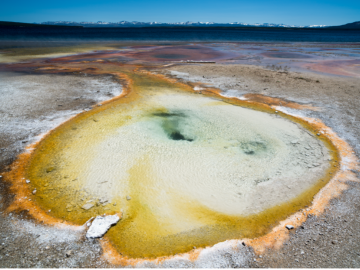
Filter News
Area of Research
- Advanced Manufacturing (4)
- Biological Systems (1)
- Biology and Environment (40)
- Computational Engineering (1)
- Computer Science (9)
- Energy Frontier Research Centers (1)
- Energy Science (37)
- Fusion and Fission (2)
- Fusion Energy (2)
- Isotope Development and Production (1)
- Isotopes (2)
- Materials (59)
- Materials Characterization (1)
- Materials Under Extremes (1)
- National Security (9)
- Neutron Science (19)
- Nuclear Science and Technology (4)
- Quantum information Science (3)
- Sensors and Controls (1)
- Supercomputing (47)
- Transportation Systems (1)
News Topics
- (-) Biomedical (17)
- (-) Computer Science (72)
- (-) Environment (65)
- (-) Materials Science (48)
- (-) Microscopy (17)
- (-) Nanotechnology (22)
- (-) Security (12)
- 3-D Printing/Advanced Manufacturing (41)
- Advanced Reactors (11)
- Artificial Intelligence (39)
- Big Data (18)
- Bioenergy (33)
- Biology (30)
- Biotechnology (7)
- Buildings (14)
- Chemical Sciences (24)
- Clean Water (11)
- Composites (11)
- Coronavirus (4)
- Critical Materials (8)
- Cybersecurity (17)
- Education (3)
- Emergency (1)
- Energy Storage (31)
- Exascale Computing (17)
- Fossil Energy (2)
- Frontier (21)
- Fusion (19)
- Grid (24)
- High-Performance Computing (33)
- Hydropower (3)
- Irradiation (2)
- Isotopes (18)
- Machine Learning (20)
- Materials (59)
- Mathematics (2)
- Mercury (4)
- Microelectronics (2)
- Molten Salt (6)
- National Security (21)
- Neutron Science (63)
- Nuclear Energy (51)
- Partnerships (24)
- Physics (29)
- Polymers (11)
- Quantum Computing (12)
- Quantum Science (22)
- Simulation (29)
- Software (1)
- Space Exploration (12)
- Summit (20)
- Transportation (37)
Media Contacts

Researchers from Oak Ridge National Laboratory and Northeastern University modeled how extreme conditions in a changing climate affect the land’s ability to absorb atmospheric carbon — a key process for mitigating human-caused emissions. They found that 88% of Earth’s regions could become carbon emitters by the end of the 21st century.

Oak Ridge National Laboratory scientists studied hot springs on different continents and found similarities in how some microbes adapted despite their geographic diversity.

Speakers, scientific workshops, speed networking, a student poster showcase and more energized the Annual User Meeting of the Department of Energy’s Center for Nanophase Materials Sciences, or CNMS, Aug. 7-10, near Market Square in downtown Knoxville, Tennessee.

The Department of Energy’s Office of Science has selected three ORNL research teams to receive funding through DOE’s new Biopreparedness Research Virtual Environment initiative.

Yaoping Wang, postdoctoral research associate at ORNL, has received an Early Career Award from the Asian Ecology Section, or AES, of the Ecological Society of America.

A new nanoscience study led by a researcher at ORNL takes a big-picture look at how scientists study materials at the smallest scales.

Madhavi Martin brings a physicist’s tools and perspective to biological and environmental research at the Department of Energy’s Oak Ridge National Laboratory, supporting advances in bioenergy, soil carbon storage and environmental monitoring, and even helping solve a murder mystery.

Technologies developed by researchers at ORNL have received six 2023 R&D 100 Awards.

Nearly 100 interns were introduced to Oak Ridge National Laboratory’s biological and environmental research over the summer of 2023 as mentors and students were eager to share knowledge and skills to address the nation’s energy and environmental challenges.

In the search for ways to fight methylmercury in global waterways, scientists at Oak Ridge National Laboratory discovered that some forms of phytoplankton are good at degrading the potent neurotoxin.


